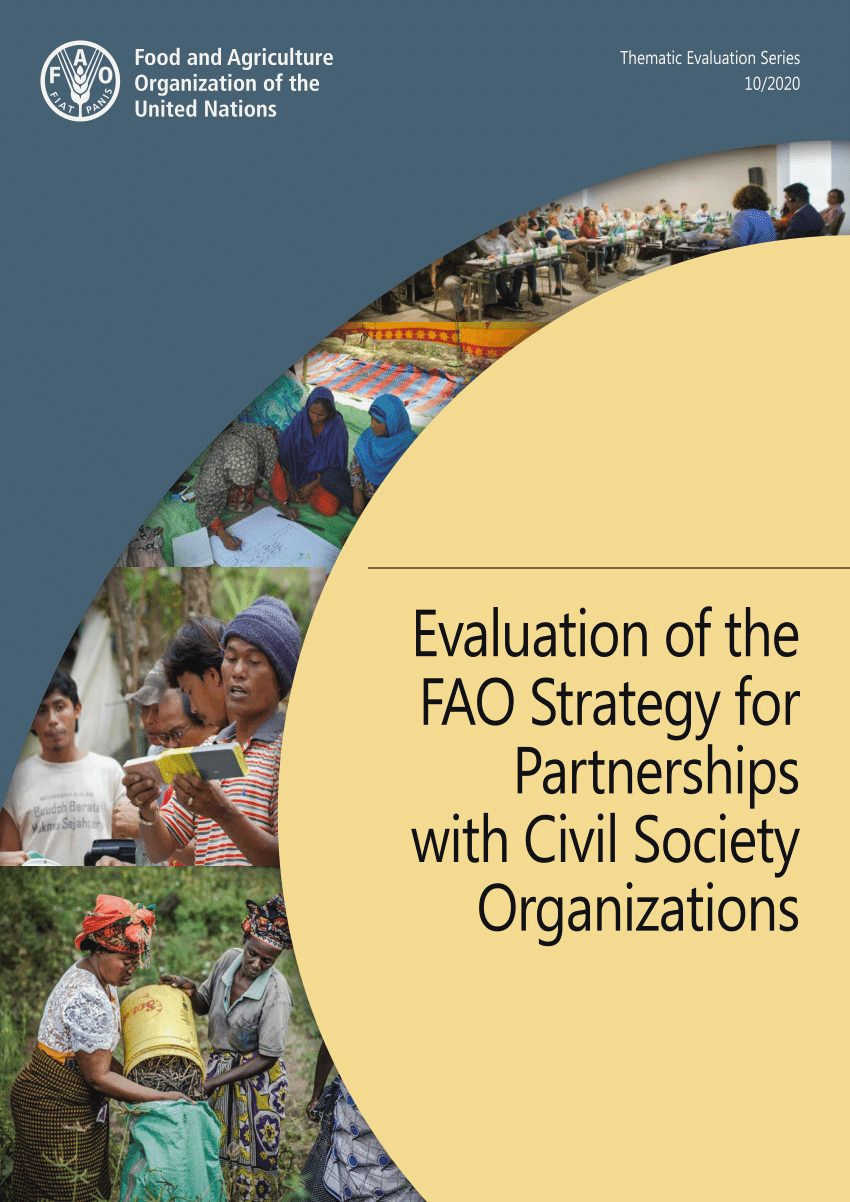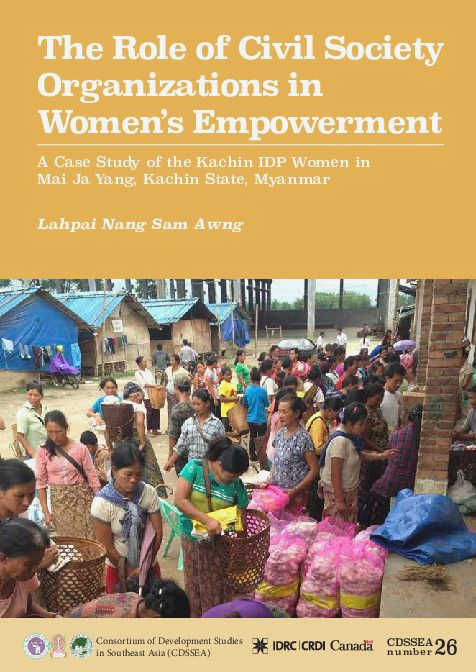Effective conservation efforts require the involvement and empowerment of civil society organizations (CSOs). These organizations play a crucial role in raising awareness, advocating for policy change, and implementing on-the-ground conservation projects. However, in order to enhance the impact of CSOs in conservation, it is important to develop strategies that empower these organizations and enable them to carry out their work effectively.
One key strategy for empowering CSOs in conservation is fostering collaboration and partnerships. By forming alliances with like-minded organizations, CSOs can pool their resources, share knowledge and expertise, and amplify their collective impact. In addition, partnerships with government agencies, academic institutions, and local communities can provide CSOs with access to funding, technical support, and a wider network of stakeholders.
Another strategy for empowering CSOs in conservation is capacity building. This involves providing training, mentoring, and resources to strengthen the skills and capabilities of CSO staff and volunteers. Capacity building programs can focus on areas such as project management, fundraising, communication, and advocacy. By investing in the professional development of CSOs, they can become more resilient, adaptable, and effective in their conservation efforts.
Additionally, it is crucial to recognize and support the role of CSOs as advocates for policy change. Engaging with decision-makers, participating in policy dialogues, and influencing the legislative process are key activities for CSOs. Empowering CSOs to effectively advocate for conservation policies and legislation can lead to long-term systemic change and ensure the protection of natural resources and biodiversity.
In conclusion, empowering civil society organizations in conservation is essential for the success of conservation efforts. By fostering collaboration and partnerships, providing capacity building opportunities, and supporting advocacy efforts, CSOs can enhance their impact and contribute to sustainable conservation outcomes. It is important for governments, donors, and other stakeholders to recognize the important role of CSOs and provide the necessary support and resources to enable them to carry out their vital work.
Understanding Conservation: Challenges and Opportunities
Conservation is a critical framework for protecting and preserving the planet’s natural resources and biodiversity. It involves the sustainable management of ecosystems, wildlife, and natural habitats to ensure their longevity and resilience for future generations. However, conservation faces several challenges and opportunities in its pursuit.
Challenges
One of the main challenges in conservation is habitat loss. Rapid urbanization, deforestation, and industrial expansion are leading to the destruction of natural habitats, threatening countless species and ecosystems. Climate change is also a significant challenge that exacerbates habitat loss, disrupts ecological processes, and puts additional strain on already vulnerable wildlife populations.
A lack of awareness and understanding is another challenge. Many people are unaware of the importance of conservation and the impacts that their actions have on the environment. Without widespread awareness and support, conservation efforts may struggle to gain traction and make a meaningful difference.
Opportunities
Despite these challenges, there are also opportunities to address and overcome them. Collaboration and partnerships between governments, civil society organizations, and local communities are essential for effective conservation. By working together, stakeholders can pool their expertise, resources, and efforts to achieve common conservation goals.
Technological advancements provide another opportunity. Innovations in remote sensing, data analysis, and monitoring tools allow for more accurate and efficient conservation efforts. These technologies enable conservationists to track habitat loss, monitor endangered species, and assess the impact of conservation interventions, leading to more informed decision-making.
Educational initiatives and community engagement also present opportunities. By raising awareness and providing educational programs about conservation, communities can become active participants in protecting their natural resources. Empowering and involving local communities in conservation efforts ensures long-term sustainability and promotes a sense of ownership and responsibility for their environment.
Overall, understanding the challenges and opportunities in conservation is crucial for developing effective strategies and empowering civil society organizations in their conservation efforts. By addressing the challenges and maximizing the opportunities, we can work towards a more sustainable future for our planet.
Strengthening Leadership: Building Capacity in Civil Society Organizations
Building leadership capacity in civil society organizations (CSOs) is essential for their success and effectiveness in conservation efforts. Leadership development programs provide CSOs with the necessary skills, knowledge, and tools to navigate complex environmental challenges and effectively engage with stakeholders.
One key aspect of building leadership capacity is providing training and mentorship opportunities. CSOs can benefit from formal training programs that cover topics such as project management, fundraising, communication, and advocacy. These programs equip leaders with the skills they need to manage their organizations efficiently and effectively.
Mentorship programs also play a crucial role in building leadership capacity. Experienced leaders can provide guidance, support, and encouragement to emerging leaders in the field of conservation. Mentors can share their knowledge and expertise, helping the next generation of leaders navigate the challenges and opportunities they will encounter in their work.
Another important strategy for strengthening leadership in CSOs is promoting diversity and inclusivity. By fostering diverse leadership, organizations can benefit from a range of perspectives, innovative ideas, and a broader understanding of conservation issues. Promoting inclusivity means creating a safe and supportive environment where all individuals can contribute their unique skills and talents.
Capacity building in leadership also involves creating opportunities for networking and collaboration. CSOs can benefit from building partnerships with other organizations, government agencies, and community groups. These collaborations can provide access to additional resources, funding opportunities, and knowledge-sharing platforms. Networking events and conferences serve as valuable opportunities for leaders to connect, learn from each other, and form strategic alliances.
In conclusion, strengthening leadership in civil society organizations is crucial for empowering them to effectively contribute to conservation efforts. By providing training, mentorship, promoting diversity and inclusivity, and fostering collaboration, CSOs can build the capacity of their leaders and increase their impact in the field of conservation.
Collaborative Approaches: Partnerships for Successful Conservation Efforts
In order to achieve successful conservation efforts, it is crucial for civil society organizations (CSOs) to employ collaborative approaches and form partnerships with various stakeholders. These partnerships allow for the pooling of resources, knowledge, and expertise, leading to more effective and sustainable conservation strategies.
One key element of collaborative approaches is the involvement of local communities. CSOs can engage with local communities by establishing community-based organizations or working closely with existing ones. This empowers local communities to take an active role in conservation efforts, as they possess valuable traditional knowledge and understanding of their local ecosystems. By involving local communities, CSOs can ensure the long-term success of conservation initiatives.

Another essential aspect of collaborative approaches is partnerships with government agencies and policymakers. By working together, CSOs and government organizations can create and implement policies and regulations that support conservation efforts. These partnerships can also help secure funding for conservation projects and provide a platform for advocacy and awareness-raising.
Collaborative approaches can also extend to partnerships with academic institutions and research organizations. By collaborating with scientists and researchers, CSOs can access scientific expertise, data, and tools that can inform and enhance conservation strategies. Additionally, partnerships with academic institutions allow for the dissemination of research findings and the development of innovative approaches to conservation.
Furthermore, collaboration among CSOs themselves is crucial for successful conservation efforts. By sharing experiences, best practices, and lessons learned, CSOs can avoid duplication of efforts and benefit from collective wisdom. Collaborative networks and platforms can also provide opportunities for joint projects, resource sharing, and capacity building.
In conclusion, collaborative approaches and partnerships are vital for successful conservation efforts. By involving local communities, government agencies, academic institutions, and other CSOs, civil society organizations can maximize their impact and work towards long-term conservation goals.
Advocacy and Policy: Influencing Decision-Making Processes
Advocacy and policy play a crucial role in empowering civil society organizations (CSOs) in conservation efforts. CSOs can use advocacy to influence decision-making processes at various levels, from local communities to national and international bodies. By advocating for policies that support conservation and sustainable practices, CSOs can have a significant impact on the protection of biodiversity and natural resources.
Influencing Local Decision-Making
At the local level, CSOs can work closely with community leaders, government officials, and other stakeholders to advocate for conservation-friendly policies. This can include promoting the establishment of protected areas, encouraging sustainable livelihoods for local communities, and raising awareness about the importance of biodiversity. CSOs can use their expertise and network to provide evidence-based recommendations to decision-makers, helping them make informed choices that prioritize conservation.
Shaping National and International Policies
CSOs can also play a crucial role in shaping national and international policies related to conservation. They can engage in lobbying efforts, partnering with like-minded organizations, and participating in policy dialogues and negotiations. Through these avenues, CSOs can raise awareness about the importance of conservation, advocate for stronger environmental regulations, and push for the inclusion of conservation goals in broader policy frameworks.
In networking and collaborating with other stakeholders, CSOs can amplify their voice and increase their influence in shaping policies. By forming coalitions with other organizations, they can pool their resources and expertise to advocate for change at a larger scale. CSOs can also leverage their knowledge and on-the-ground experience to provide inputs and recommendations to policymakers, helping them understand the potential impacts of their decisions on the environment and communities.
CSOs can also use various communication tools and platforms to raise public awareness about conservation issues and engage the public in advocating for policy changes. This can include social media campaigns, public events, and media outreach. By mobilizing public support and generating public pressure, CSOs can create a conducive environment for policy changes that prioritize conservation.
- CSOs can collaborate with researchers and scientists to gather data and evidence that support their advocacy efforts.
- Through monitoring and research initiatives, CSOs can provide policymakers with data on the status of biodiversity and the effectiveness of existing policies.
- CSOs can also engage in capacity building activities, empowering local communities and stakeholders to actively participate in decision-making processes and advocate for their rights and the environment.
Innovative Funding Models: Ensuring Financial Sustainability
Introduction:
Financial sustainability is a significant challenge for many civil society organizations (CSOs) working in conservation. To ensure the long-term success of these organizations, innovative funding models are being explored to secure reliable and diverse sources of funding. By diversifying their funding streams, CSOs can reduce their reliance on a single source of funding and develop a stable financial base.
Thinking Beyond Traditional Funding Sources:
CSOs are increasingly looking beyond traditional sources of funding, such as government grants and donations, to secure sustainable financing. By exploring partnerships with private sector entities, CSOs can tap into corporate social responsibility initiatives, secure funding through sponsorships or investment, and benefit from the expertise and resources of private sector partners.
Diversifying Funding Streams:
CSOs are adopting a multi-pronged approach by diversifying their funding streams. This includes seeking funding from a variety of sources, such as foundations, trusts, and individual donors. With diverse funding sources, CSOs can better weather fluctuations in funding availability and reduce the risk of financial instability.
Crowdfunding and Online Platforms:

In the digital era, crowdfunding and online platforms have emerged as innovative funding models for CSOs. These platforms allow CSOs to directly connect with a wide audience of potential donors and raise funds for their conservation projects. By leveraging the power of social media and online networks, CSOs can reach a larger donor base and raise funds more efficiently.
Blended Finance and Impact Investing:
Blended finance and impact investing are also gaining traction as innovative funding models for CSOs. Blended finance involves combining public and private funds to finance conservation projects, while impact investing focuses on investing in projects that generate both financial returns and positive environmental or social impact. These models offer new opportunities for CSOs to access capital and attract investment for their conservation initiatives.
Conclusion:
Innovative funding models are crucial for ensuring the financial sustainability of civil society organizations in conservation. By thinking beyond traditional funding sources, diversifying their funding streams, and exploring new avenues such as crowdfunding and impact investing, CSOs can secure the financial resources needed to continue their important work in protecting and conserving the environment.

Technological Solutions: Harnessing Innovation for Conservation
In the modern era, technology has become an invaluable tool for conservation efforts. Technological solutions provide numerous opportunities for civil society organizations to empower their work and make a greater impact in the field of conservation.
One of the key ways in which technology is empowering conservation is through the use of remote sensing techniques. Remote sensing allows organizations to gather data about the environment and wildlife from a distance, using satellites, drones, and other devices. This data can then be used to monitor changes in ecosystems, identify areas of concern, and better understand the impacts of human activities on the environment.
Another important technological solution for conservation is the development of mobile applications. Mobile apps can be used to engage and educate the public about conservation issues, provide tools for citizen science initiatives, and facilitate the reporting of environmental crimes or incidents. These apps have the potential to reach a large audience and create a network of engaged individuals who can contribute to conservation efforts on a global scale.
Furthermore, the use of artificial intelligence and machine learning algorithms is revolutionizing conservation research and data analysis. These technologies can help organizations analyze large amounts of data, identify patterns, and make predictions about future conservation outcomes. For example, machine learning algorithms can be used to analyze satellite imagery and automatically detect deforestation or illegal logging activities, allowing organizations to take prompt action.
In addition to these solutions, collaboration platforms and data sharing tools are empowering civil society organizations to work together more effectively and efficiently. These platforms allow organizations to share data, resources, and best practices, enabling them to tackle conservation challenges collaboratively. By harnessing the power of technology and innovation, civil society organizations can make significant strides in their mission to protect and conserve the environment.
Youth Engagement: Empowering the Next Generation of Conservation Leaders
Introduction
Engaging youth in conservation efforts is crucial for the long-term sustainability of our planet. By empowering the next generation of conservation leaders, we can ensure that the vital work of protecting and preserving our natural resources continues for years to come. Youth engagement not only allows young people to contribute their unique perspectives and ideas, but also helps them develop a sense of responsibility and connection to the environment.
Benefits of Youth Engagement
When young people are actively involved in conservation, they gain valuable skills and knowledge that can benefit them personally and professionally. Through hands-on experiences, youth can learn about ecosystems, biodiversity, and sustainable practices. They also develop leadership, problem-solving, and critical thinking skills that are transferable to various aspects of their lives. Furthermore, engaging youth in conservation helps foster a sense of ownership and pride in their communities and the natural world.
Strategies for Youth Engagement
There are several effective strategies for engaging youth in conservation. One approach is to provide educational programs and workshops that focus on environmental issues and encourage young people to take action. This can include activities such as tree planting, wildlife monitoring, and waste reduction initiatives. Another strategy is to create mentorship programs, where experienced conservationists can guide and support youth in their conservation efforts.
Technology can also play a significant role in engaging youth. Creating online platforms and mobile apps that provide information, resources, and opportunities for collaboration can help connect young people who are passionate about conservation. Furthermore, incorporating storytelling and creative communication methods, such as videos and social media campaigns, can help capture the attention and interest of youth and inspire them to get involved.
Conclusion
Engaging youth in conservation is essential for building a sustainable future. By empowering the next generation of conservation leaders, we can ensure the continued protection of our natural resources. Through educational programs, mentorship opportunities, and innovative technologies, we can inspire and enable young people to take an active role in environmental conservation. Together, we can create a world where the voices of youth are heard, and their actions make a positive impact on the planet.
Promoting Gender Equality: Creating Inclusive Conservation Initiatives
In order to create truly inclusive conservation initiatives, promoting gender equality is crucial. Gender equality ensures that all individuals, regardless of their gender, have equal opportunities and representation in conservation efforts. By including women and gender minority groups in decision-making processes and leadership roles, a diverse range of perspectives and experiences can be incorporated, resulting in more effective and sustainable solutions to conservation challenges.

One strategy to promote gender equality in conservation is to provide training and capacity-building opportunities specifically tailored to women and gender minority groups. These programs can focus on developing skills related to conservation science, policy advocacy, and community engagement. By empowering women and gender minorities with the knowledge and tools they need to actively participate in conservation, their contributions can be amplified and their voices heard.
Another important aspect of creating inclusive conservation initiatives is ensuring gender-sensitive approaches. This involves considering the different needs, priorities, and challenges faced by men, women, and gender minorities in conservation activities. For example, activities such as field research or community outreach may require specific considerations to address safety concerns or cultural norms. By incorporating gender-sensitive approaches, conservation initiatives become more accessible and inclusive for all individuals involved.
Collaboration and partnerships are also key to promoting gender equality in conservation. By working together with civil society organizations, government agencies, and local communities, it is possible to leverage resources, share best practices, and advocate for policy changes that promote gender equality and inclusivity. By fostering these collaborations, conservation initiatives can benefit from diverse perspectives, increased resources, and a collective effort towards achieving gender equality and sustainable conservation.
In conclusion, promoting gender equality is essential in creating inclusive conservation initiatives. By providing opportunities for women and gender minorities, adopting gender-sensitive approaches, and fostering collaborations, we can empower individuals and ensure that everyone has a voice and a role in conservation efforts. By embracing diversity and striving for gender equality, we can create a more equitable and sustainable future for conservation.
Monitoring and Evaluation: Ensuring Effective and Impactful Conservation Outcomes
Monitoring and evaluation (M&E) plays a crucial role in the conservation efforts of civil society organizations (CSOs). By systematically and regularly collecting data and assessing the progress and impact of their programs, CSOs can ensure that their conservation initiatives are effective and making a meaningful difference in biodiversity conservation.
One key aspect of M&E is defining clear and measurable indicators that reflect the desired outcomes of conservation efforts. These indicators can include the number of species protected or restored, the extent of habitat conserved or restored, and the level of community engagement and empowerment achieved. By identifying and tracking these indicators, CSOs can assess their progress and make informed decisions to improve their strategies and interventions.
Effective monitoring and evaluation also involves the use of robust data collection and analysis methods. CSOs need to establish reliable systems for data collection, such as conducting surveys, using remote sensing technologies, and engaging local communities in data collection efforts. They should also invest in building the capacity of their staff and partners to effectively analyze and interpret the collected data.
Evaluation of conservation outcomes
To ensure that conservation outcomes are truly impactful, CSOs need to conduct rigorous evaluations of their programs. This involves assessing the extent to which conservation objectives have been achieved and evaluating the effectiveness of the strategies and interventions implemented. CSOs may use a variety of evaluation methods, such as impact assessments, cost-benefit analysis, and stakeholder feedback, to gather evidence and insights.
By evaluating their conservation outcomes, CSOs can identify what has worked well and what needs improvement. They can learn from their successes and failures, adapt their strategies and interventions accordingly, and share their learnings with other organizations to enhance collective knowledge and promote effective conservation practices.
Furthermore, CSOs should consider incorporating participatory monitoring and evaluation approaches that involve local communities in the assessment and decision-making processes. By engaging local stakeholders, CSOs can foster a sense of ownership and empowerment, and ensure that conservation efforts are aligned with local needs and priorities.
In summary, monitoring and evaluation are essential for CSOs to track and measure the effectiveness and impact of their conservation efforts. By defining clear indicators, utilizing robust data collection and analysis methods, evaluating conservation outcomes, and incorporating participatory approaches, CSOs can ensure that their initiatives are making a meaningful difference in biodiversity conservation and contribute to the long-term sustainability of our planet.





